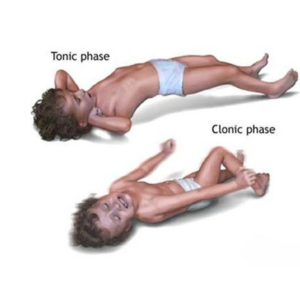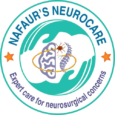Cerebral Palsy
Cerebral Palsy
Cerebral Palsy (CP) is a group of permanent neurological disorders that affect movement, muscle tone, posture, and coordination in children. It results from damage to the developing brain, usually before, during, or shortly after birth. Though non-progressive, its impact on motor function can vary from mild weakness to severe physical disability. In Bangladesh, CP is one of the leading causes of childhood disability, yet many children remain undiagnosed, undertreated, or unsupported due to lack of awareness and specialized care. Dr. Md. Nafaur Rahman, one of the top pediatric neurosurgeons in Bangladesh, offers modern surgical and rehabilitative interventions to help CP children achieve their fullest potential. 🌍 Cerebral Palsy – Bangladesh Perspective In Bangladesh, thousands of children develop CP each year due to: 🚼 Birth asphyxia or oxygen deprivation during delivery 👶 Prematurity and low birth weight 🧠 Neonatal jaundice (kernicterus) 🤒 Infections like meningitis or encephalitis 🧬 Genetic or metabolic brain disorders 🚧 Poor perinatal care in rural or underdeveloped areas Despite the high prevalence, access to early diagnosis, therapy, and neurosurgical interventions remains limited, particularly outside major cities. Dr. Nafaur Rahman is committed to bridging this gap with expert multidisciplinary management. ⚠️ Symptoms of Cerebral Palsy in Children The symptoms of CP vary widely based on the type and severity of brain injury. Parents should be alert for: 🦵 Delayed motor milestones (late sitting, walking, crawling) 💪 Abnormal muscle tone (too stiff or too floppy) 🤷♂️ Involuntary movements or tremors 🧍 Poor balance or posture 🚶♂️ Abnormal gait (toe walking, scissor gait) 💬 Delayed speech or oromotor issues ⚠️ Feeding problems, drooling, or swallowing difficulties 🧠 Seizures or learning difficulties in some cases “In Bangladesh, many children are diagnosed late. But with early treatment, we can drastically improve mobility, independence, and social integration.” — Dr. Md. Nafaur Rahman 🧬 Types of Cerebral Palsy Spastic CP – Most common; increased muscle tone leads to stiff limbs and awkward movements Dyskinetic CP – Involuntary, uncontrolled movements (dystonia, chorea) Ataxic CP – Affects balance and coordination Mixed CP – Combination of the above types, especially spastic-dyskinetic 🧪 Diagnosis of Cerebral Palsy Dr. Nafaur Rahman uses a comprehensive diagnostic approach: 🧠 MRI brain – To identify structural brain injury 🩺 Neurological examination – To assess reflexes, tone, and development 📈 GMFCS scoring – For functional classification of motor abilities 🧪 Metabolic/genetic tests – If syndromic or unclear cause 🩸 Hearing, vision, and speech evaluations – To guide therapy planning 🛠️ Multidisciplinary Treatment of Cerebral Palsy There is no cure for CP, but early, personalized treatment helps children reach maximum independence. Dr. Nafaur Rahman leads a team-based approach involving: 1. 💊 Medical Management Muscle relaxants: Baclofen, Diazepam Anticonvulsants for seizure control Botox injections for focal spasticity 2. 🧠 Neurosurgical Interventions a) Selective Dorsal Rhizotomy (SDR) Surgical cutting of overactive spinal nerves Improves mobility in ambulatory spastic CP Especially effective in GMFCS levels II–III b) Intrathecal Baclofen Therapy (ITB Pump) Delivers muscle relaxants directly into the spinal fluid Ideal for generalized spasticity or dystonic CP Reduces tone with fewer systemic side effects c) Orthopedic Collaboration Tendon releases or bone surgeries to correct contractures Performed in conjunction with pediatric orthopedic surgeons 3. 🧒 Rehabilitative Therapies Physiotherapy – For strength, posture, and mobility Occupational therapy – To improve daily living skills Speech therapy – For communication and feeding issues Special education support – For cognitive or behavioral needs Parental training – For home care and exercises 🔁 Long-Term Support and Follow-Up Managing CP is a lifelong process. Dr. Nafaur Rahman ensures continued care with: 🧾 Individual treatment plans and progress tracking 🧠 Periodic reassessment of therapy/surgical needs 🛡️ Nutritional and psychological support 🏫 School readiness evaluation and inclusion advocacy 🤝 Parent support groups and counseling 🚨 Consequences of Untreated CP in Bangladesh Without early and ongoing management, CP can lead to: 🧑🦽 Permanent disability and joint deformities 📉 Poor educational outcomes and unemployment 🔁 Social exclusion and dependency 😔 Emotional distress for child and family ❌ Increased financial and caregiving burden 👨⚕️ Why Choose Dr. Md. Nafaur Rahman? 🧠 National leader in neurosurgical treatment of cerebral palsy 🏥 Based at National Institute of Neurosciences & Hospital (NINS) 🧒 Personalized, child-friendly care at Bangladesh Paediatric Neurocare Centre ✅ Offers SDR, ITB pump, and Botox therapy with global-standard protocols 🤝 Strong collaborations with therapists, orthopedists, and special educators 🌍 Serving children from all over Bangladesh, including rural outreach 📞 Take the First Step Toward a Brighter Future Dr. Md. Nafaur Rahman Assistant Professor, Pediatric Neurosurgery, NINS Chief Consultant, Bangladesh Paediatric Neurocare Centre 📱 For Serial/Appointments: 📞 01912988182 | 📞 01607033535 🌐 Visit: www.neurosurgeonnafaur.com


